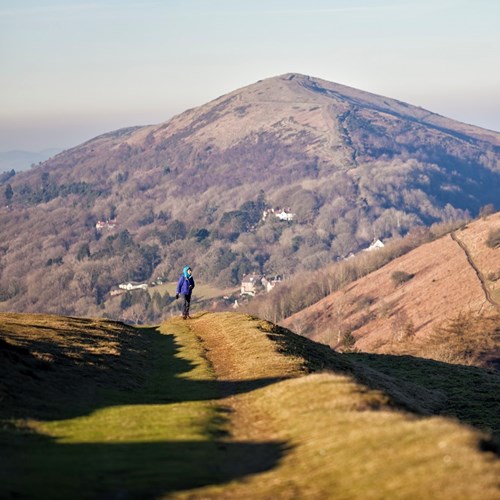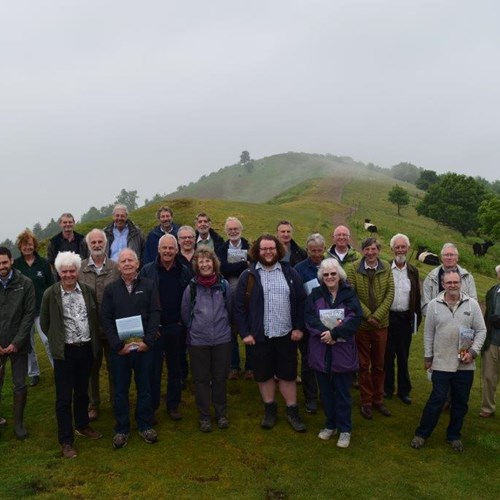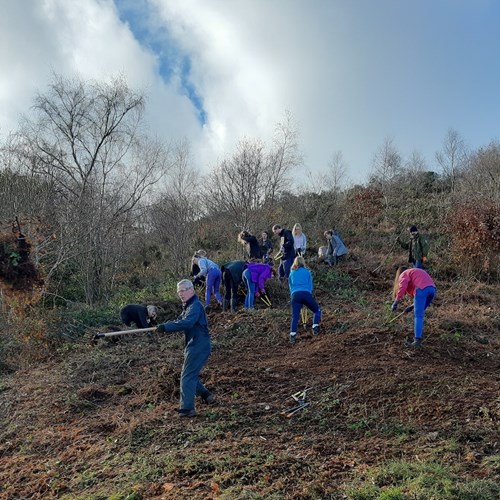Today is the 70th anniversary of the Act of Parliament to safeguard Britain's most iconic landscapes and ensure public access to these special places.
In 1949, the National Parks and Access to the Countryside Act was passed, under which National Parks and Areas of Outstanding Natural Beauty (AONB) can be designated.
These celebrations coincide with the 60th anniversary of the Malvern Hills AONB which was created in 1959, ten years after the Act was passed. This protected landscape covers 105sq km of Hills, woodlands and farmlands including the Malvern Hills, Suckley Hills and Eastnor Deer Park.
To mark this special occasion the team have been working on projects to highlight the beauty of this area. Visitors to Malvern can admire the beauty of the area by visiting Church Walk, near Waitrose, where a selection of stunning images by local photographer Jan Sedlacek are on display.
Sarah Jones, AONB Officer said “Jan is a true ambassador for this area and his images are instantly recognisable, making him perfect for this project.”
Postcards and cards featuring these photographs are also now available to purchase locally to celebrate the area. You can find even more breath-taking images on Jan’s website.
Almost 85% of the land we care for falls within the Malvern Hills AONB and we work closely in partnership to conserve the important features and special qualities of this landscape and improve public access here.
Beck Baker, Community and Conservation Officer said “It’s fantastic to work so closely with an organisation that shares the same values to conserve this amazing landscape for people and wildlife. This partnership has allowed us to undertake specific projects and have provided opportunities for people to find out more about this area.”
Here are a few of the projects on the Malvern Hills that have been supported through the Malvern Hills AONB Sustainable Development Fund. You can find out more about the projects they've supported in the wider AONB area here.
Wildlife
- Adder tracking - These rare and protected reptiles are found in small numbers on the Malvern Hills. A project to attached geo-locators and tracking devices has allowed us to find out more about the snakes' behaviour and ecology. This information is being used to help us plan habitat conservation works to support the future of this species.
- Lesser horseshoe bats - One of Britain's rarest bat species can be found in the Malvern Hills. Working with local volunteers and bat experts a number of surveys were carried out to identify commuting routes to feeding areas. Woodland management on the Hills can now be undertaken with this knowledge on how to protect these links within the landscape.
- Grayling butterflies - The Malverns are home to Worcestershire's rarest butterfly which makes its home on the open, bare rocks here. Volunteers and Butterfly Conservation West Midlands have dedicated hundreds of hours to provide the best habitat possible to conserve this species with the aim of increasing butterfly numbers.
History and Culture
- British Camp - One of the most iconic summits on the ridgeline of the Malvern Hills, this 2,000 year old monument still holds some secrets. Using new technologies and geophysical surveys, more of this monuments complex history has been revealed through the finding of some possible Bronze Age structures.
- Kings Thirds - Little-know seventeenth century banks and ditches have been brought to life by local archaeologist George Demidowicz. Surveys of the northern Hills have revealed a network of structures which have been published in a leaflet to help visitors discover this story themselves.
- Geological beginnings - Working with the Herefordshire and Worcestershire Earth Heritage Trust, visitors can now discover more about the 680 million year old history of the rocks that make the Malvern Hills. New interpretation boards at North and Tank Quarry take visitors back to the very beginning and creation of this landscape.
Public Access and information
- Walking and cycling map and guide - With more and more people getting the benefits of visiting the Malverns and spending time in the great outdoors, we've produced a free map and guide for walkers and cyclists. These maps help visitors find their way but also provide information on how people can also take care of the Malvern Hills and Commons on their visit.
- Nature of the Malverns - This is the first book covering all the natural history of the Malvern Hills and surrounding commons. Filled with stunning images of the wildlife to be found here and detail written by local experts there's something for everyone. All the proceeds from the sale of this book go towards the conservation of this landscape.
- Improving disabled access - In partnership with Cafe H2O at the Wyche Cutting we've helped to improve disabled access to the very top of the Malvern Hills. Visitors can now hire a mobility scooter up to the Worcestershire Beacon and admire the wide-ranging views.
- Letterboxing - Encouraging younger generations to access and explore the outdoors is essential in caring for our special places in the future. Over the last 2 years, alongside Malvern Hills District Council, we've set up a letterbox challenge for families during the spring and summer to help families enjoy and learn more about the Malvern Hills.
The 1949 Act also led to the establishment of the organisation which is today known as Natural England. This is another strong partnership as 57% of land under our jurisdiction is designated as a Site of Special Scientific Interest by this Natural England.



